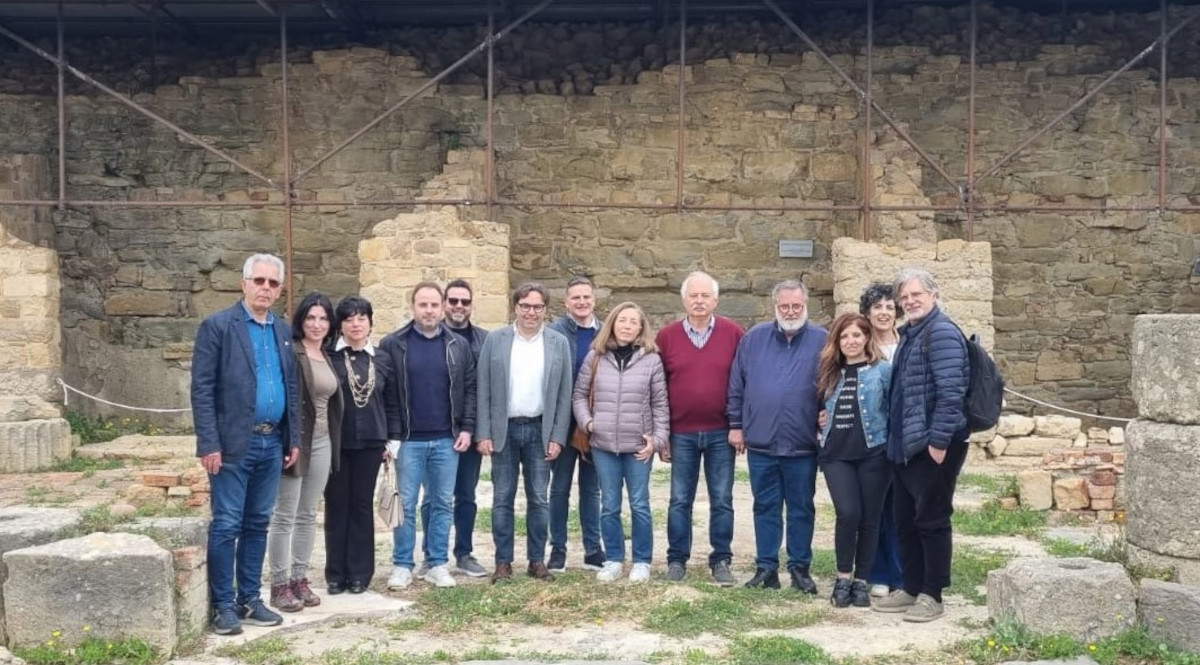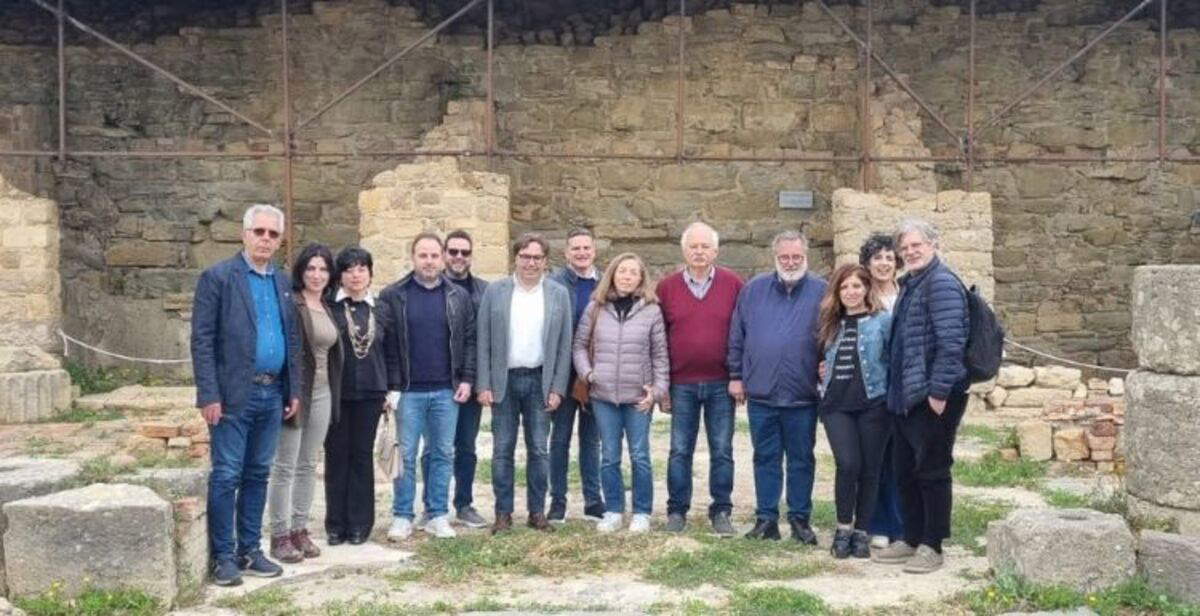At the archaeological site of Halaesa Arconidea, in the municipal territory of Tusa, in the province of Messina, excavation work has officially begun that will lead to the complete emergence of the Hellenistic-Roman theater. The work was started after the formal handover of the site, which took place in recent days in the presence of the heads of the Tindari Archaeological Park, the Messina Cultural Heritage Superintendency and the Tusa municipal administration. The excavation project has an expected duration of two years and a total cost of more than 760 thousand euros. The execution of the intervention was entrusted to the company Cavarra Vincenzo Srl of Noto, winner of the tender announced by the Messina Superintendency, which acted as the contracting station. The project was prepared by architect Giuseppe Natoli, current director of the Tindari Archaeological Park, together with Pietro Coppolino, surveyor Giovanni Manera and architect Pietro Lipari.
“This is an extraordinary event in the history of archaeological discoveries in Sicily,” said Councillor for Cultural Heritage and Sicilian Identity Francesco Paolo Scarpinato. “This will make it possible to learn about and study a monumental public building of Greco-Roman age of the first order because of its exceptional size and the state of conservation of the architectural elements that constitute it.”
“In addition to being an event of great scientific exceptionality,” is the comment of Tindari Archaeological Park director Giuseppe Natoli, “the excavation of the Theater of the ancient city of Alesa, still buried under 12.600 cubic meters of earth, fourth in Sicily in importance and size after that of Syracuse, Agrigento (currently being excavated) and Taormina, would make Alesa one of the main stops on the tourist circuit of the island’s archaeological sites, attracting the interest of national and international tourists, as well as scholars and enthusiasts.”

The discovery of the theater, among the discoveries of recent decades in the Sicilian archaeological scene, is the result of research activities initiated since 2017 by the French mission of the University of Amiens, under the direction of Professor Michela Costanzi. The first excavation essays provided enough archaeological evidence to make certain the presence of the monumental building. Investigations then intensified in the 2018-2019 biennium, with the opening of several exploratory trenches, and reached a decisive point during the 2021 excavation campaign. During the latest phase, well-preserved portions of the south wall of the cavea and the access wall to the building emerged, elements that allowed archaeologists to clearly delineate the structure and dimensions of the theater. The monument is 77 meters in diameter and 37.5 meters deep. According to estimates, it could seat up to ten thousand spectators. Its function was twofold: on the one hand it constituted a public space for performances and assemblies, and on the other it played a central urban role, serving as a connecting point between the southern and northern parts of the ancient city.
Funding for the intervention was secured by the Regional Department of Cultural Heritage and Sicilian Identity, which included the operation among the priorities of its plan for the enhancement of archaeological sites. The monitoring of the work will be carried out by the Tindari Archaeological Park in synergy with the Superintendence for Cultural and Environmental Heritage of Messina and the French archaeological mission, which will continue to actively participate in research and documentation activities. The project is part of a broader regional strategy aimed at recovering and securing the archaeological heritage scattered along the Sicilian territory. According to the timetable, the field activities will include the progressive stratigraphic excavation of the entire theater area, the scientific documentation of the artifacts and structures that have emerged, as well as any conservation work to be carried out during the course of the project. The theater of Halaesa, once fully unearthed, will thus be able to reenter the circuits of cultural and tourist enjoyment of the northeastern area of Sicily, helping to strengthen the attractiveness of an area still little known to the general public but rich in archaeological evidence of considerable importance. The current intervention could also stimulate further excavation campaigns at the Halaesa site, which covers a large and still only partially explored area.
 |
| Excavations in Tusa (Messina), work is underway to unearth the Hellenistic-Roman theater of Halaesa |
Warning: the translation into English of the original Italian article was created using automatic tools. We undertake to review all articles, but we do not guarantee the total absence of inaccuracies in the translation due to the program. You can find the original by clicking on the ITA button. If you find any mistake,please contact us.